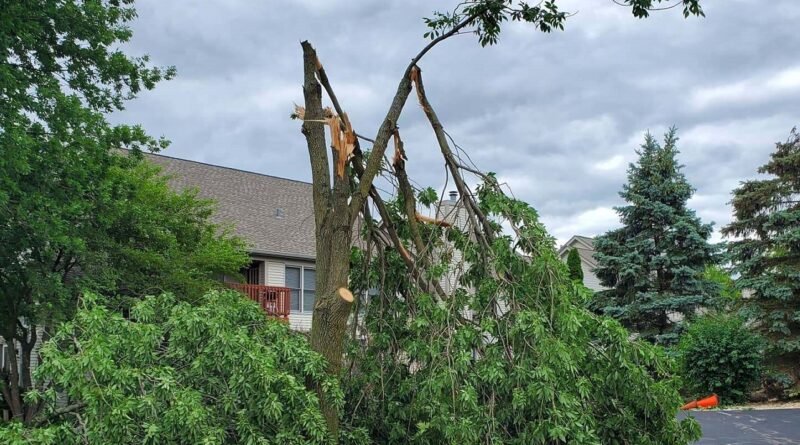How to Rescue Storm Damaged Trees
Podcast: Play in new window | Download (Duration: 2:03:35 — 58.5MB)
Subscribe: Apple Podcasts | Spotify | Android | iHeartRadio | Podchaser | Email | TuneIn | RSS | More
(July 4, 2021) Storms changed a lot of people’s lives in the past couple of weeks in the Chicago area. However, no one died. Unless you count trees. Today we celebrate the 4th of July by talking about those casualties. And we will offer advice about how to rescue storm damaged trees. Of course, as in the case of the tornadoes that swept through some western suburbs, not every tree can be saved.
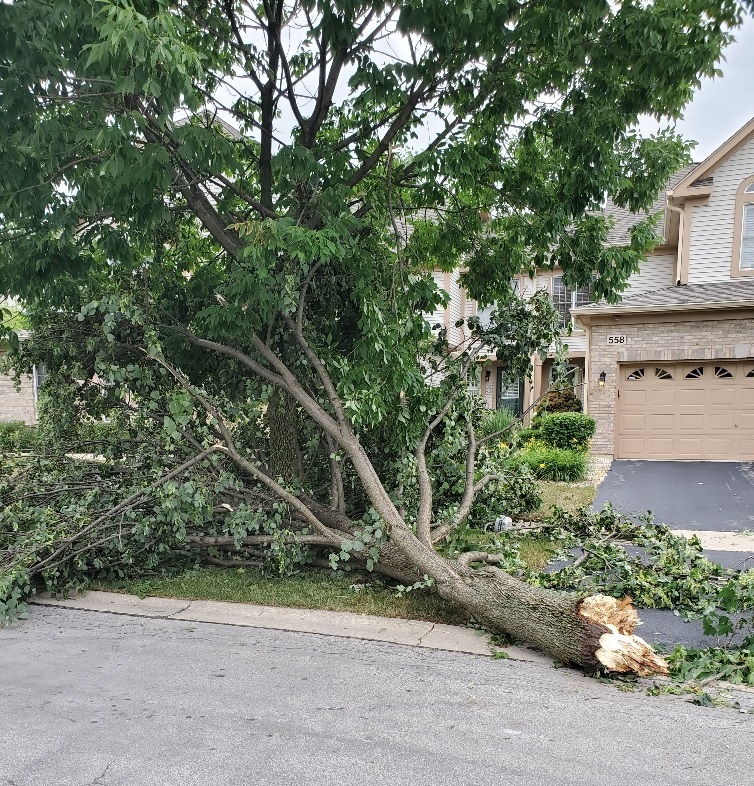
But looking at satellite photos, it’s evident that hundreds, if not thousands, of trees were within the path of the three block-wide whirlwind. On the ground, it seemed few escaped damage, with many broken in half, shorn of huge branches or uprooted altogether. So many were cracked open that the air carried the scent of a lumberyard.
Assessing the damage
M.D. Skeet (aka “Skeet”) from Bartlett Tree Experts saw the damage close up and personal. (Full disclosure: Bartlett is the primary sponsor of The Mike Nowak Show with Peggy Malecki.) Skeet, who is a regular on our show, wrote about the sense of loss on the part of homeowners.
This week has been a tough week for our crews, clients and trees as a tornado created damage around the towns that our office services. The clean-up of branches, pruning, and in many situation tree removal can be very emotional. We appreciate all the clients that brought the crews water, snacks, and said thank you.
Skeet reminds us that trees are not only an ecological asset and an investment, they are often considered part of the family. The loss of a tree can be traumatic. And, as the Chicago Tribune reports above, when an entire neighborhood is wiped out, it can be devastating. Bartlett Tree Experts knows all about how to rescue trees. But it warns about the immediate aftermath of a storm.
Following severe storms, Bartlett’s first priority is responding to existing clients to provide emergency services including removing trees from houses, clearing roads, and driveways, and pruning or removal of trees that could lead to personal injury or additional property damage.
Once emergency services are complete, crews begin the process of clean up and repair on storm-damaged plants. Even if your trees do not exhibit obvious damage, it is important to have them inspected by a certified arborist who may detect symptoms and conditions that could lead to problems later.
Unfortunately, sometimes the only recourse is to remove what’s left of a tree and replant. That’s where our next guest comes in.
How to rescue trees from chemical damage
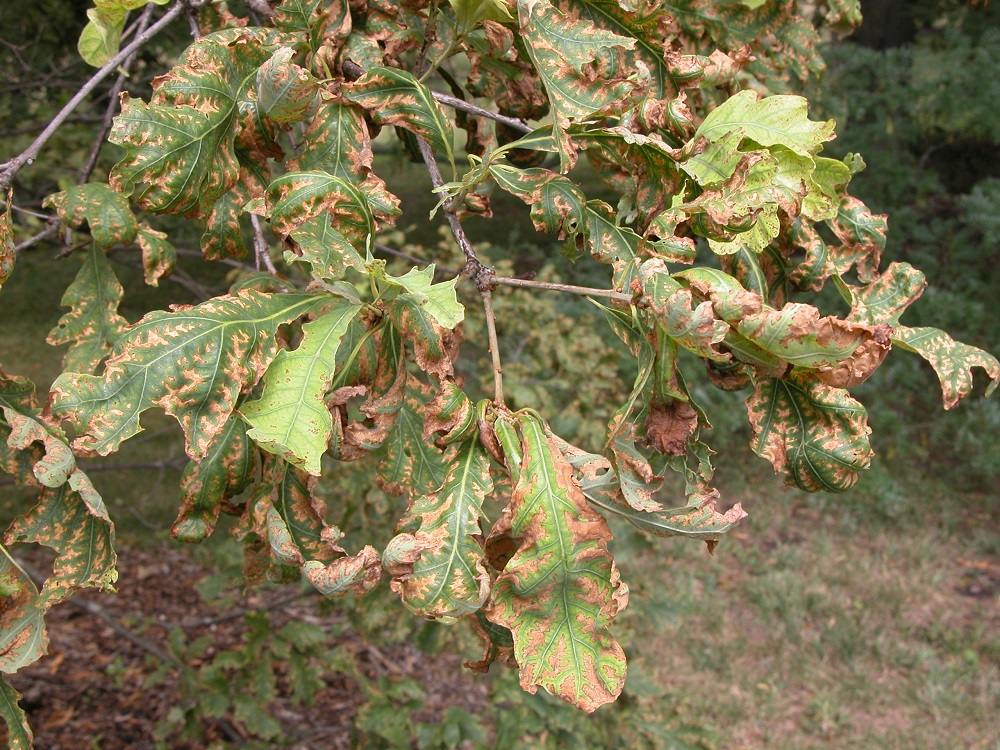
Julie Janoski wan’t on the front lines of the recent storms, but she certainly got an earful about the storms. Janoski manages the Plant Clinic at The Morton Arboretum. It provides science-based advice about trees, plants, landscapes and, yes, storm damage. Janoski will add her insight to Skeet’s this morning. But they will both talk about other dangers to trees and plant health: improper watering and chemical damage.
We will also have information on choosing and planting new trees. Stand by to take notes. We think you will learn a lot on today’s show.
Changes at the Magic Hedge
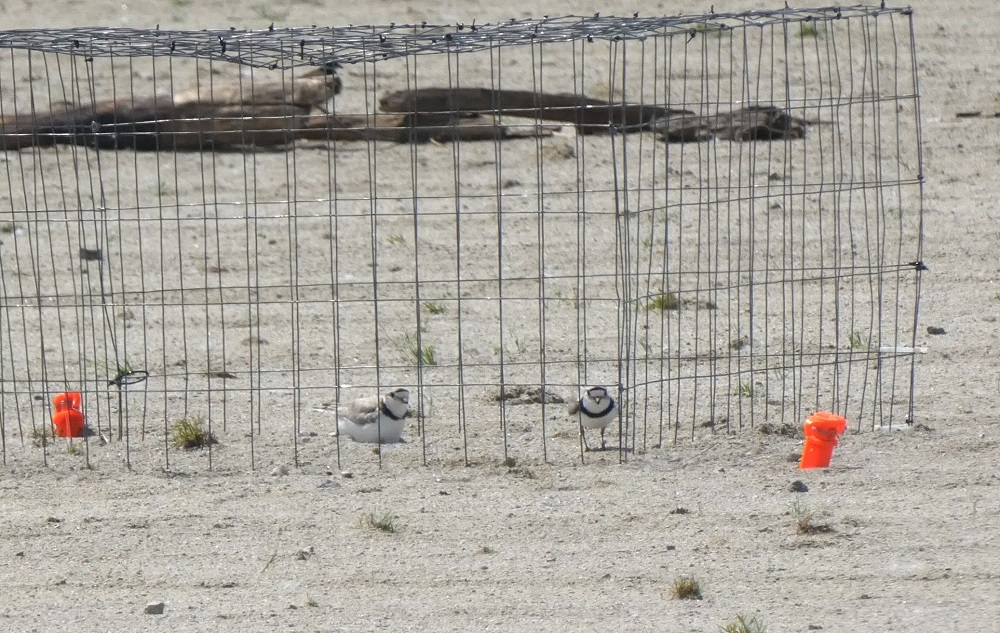
Our viewers know that Peggy and I have been following the magic of Monty & Rose for three years. M & R are the endangered piping plovers that have taken up residence on the shores of Lake Michigan at Montrose Beach Dunes. Speaking of how to rescue things, the birds survived a skunk attack on their nest and promptly set up a new nest. It didn’t take long for Chicago’s first couple to produce four more eggs. Now, we’re all eagerly and anxiously waiting to see what happens.
Speaking of offspring, one of M & R’s progeny is making a name for itself in Ohio. Nish, who was hatched in Chicago in 2020, has taken up residence at Maumee Bay State Park on Lake Erie. He and his mate Nellie have already hatched four piping plover chicks.
Meanwhile, Bob Dolgan wrote about a puzzling development in his blog, This Week in Birding. The Chicago Park District abruptly closed access to Lincoln Park’s Montrose Point Bird Sanctuary, home of the famed Magic Hedge.
There’s nothing wrong with sprucing up the bird sanctuary, engaging in habitat restoration and putting in an accessible path, as is happening now. Maybe even closing off portions of the sanctuary. But people do want to be in on the plan, especially with a place as beloved to nature-starved city dwellers. Thousands of people utilize this site for all sorts of reasons. Birding, yes, but also for a little fresh air, a change of scenery and communion with nature.
Why now?
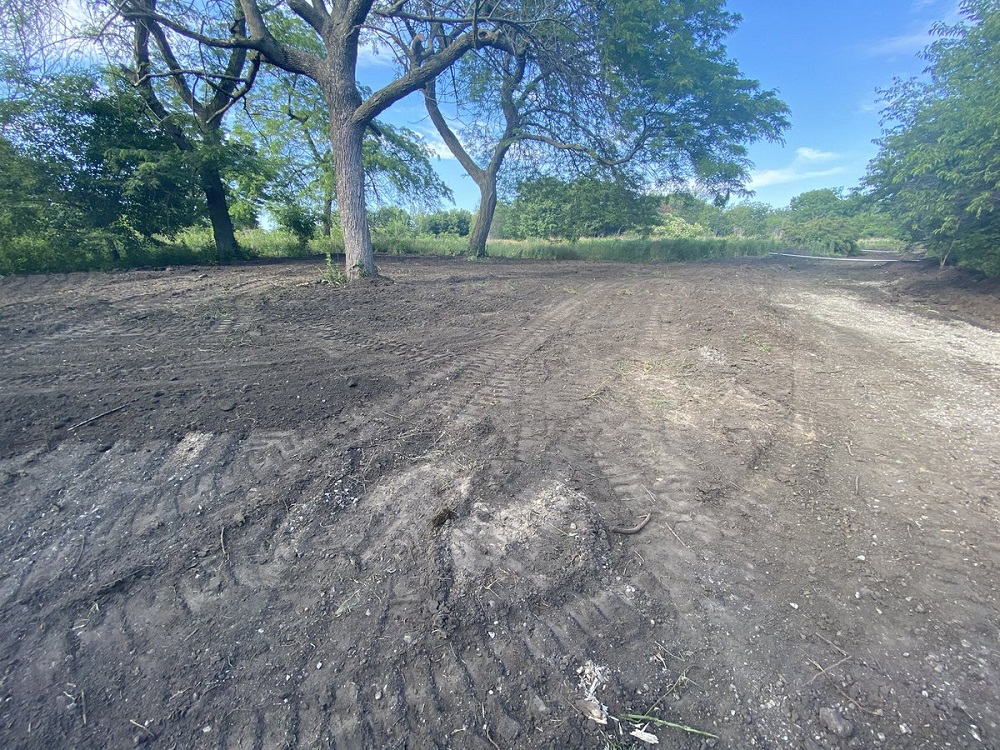
To be sure, CPD posted about the work, which they note has been planned for awhile.
The latest master plan for the Montrose Point Bird Sanctuary was finalized in 2015 after an extensive community engagement process. Engineering designs for structural improvements, including trails, fencing, and the not-yet-funded water feature, were prepared with community input in 2017. In 2018, Chicago Park District applied for a grant to support the construction of an ADA-accessible pathway at Montrose Point; and, in 2020, the Illinois Department of Natural Resources’ Recreational Trails Program awarded a grant to CPD for this project.
In addition to accessibility, the trail-paving will provide other benefits.
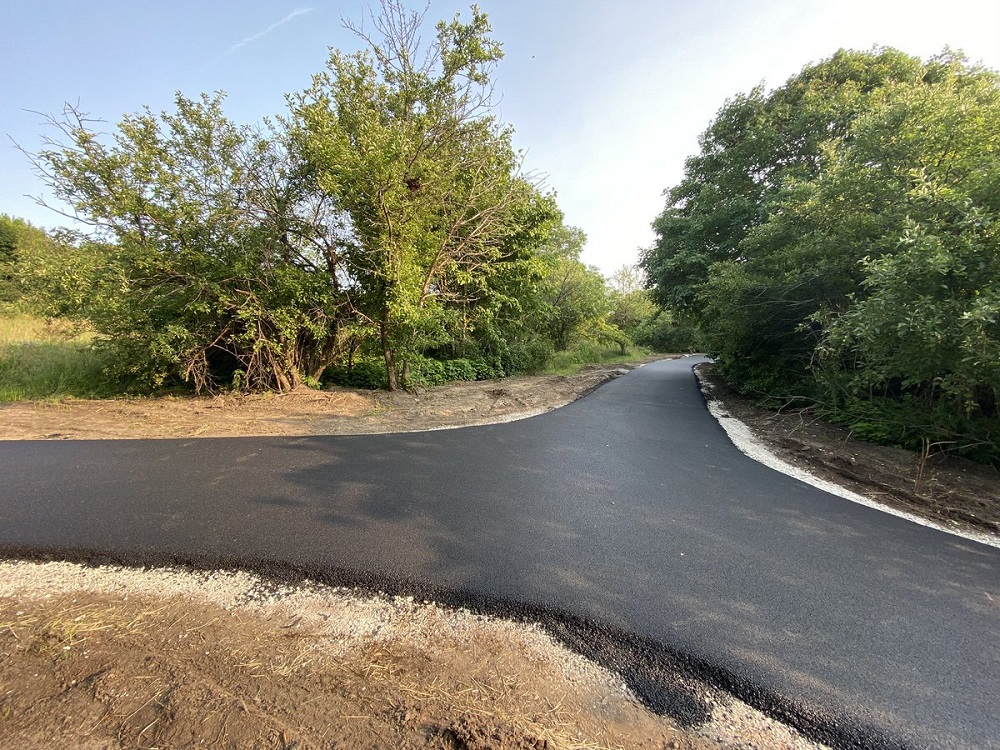
The new asphalt trail will be an 8-foot wide, 1/3-mile long loop that travels near the areas known to many as the Magic Hedge, the Magic Clump, and the Tangle. In many places, this will be narrower than the current mulch trails. As Illinois’ most popular birding site, Montrose Point currently suffers from mulched paths that have expanded over time (15 feet or wider in some places), which makes it difficult if not impossible for the areas around the pathways to support thriving plant communities.
CPD says the area will be closed to the public until August ” to have minimal impact on bird migration.” Unfortunately, it will have maximum impact on public participation. The Chicago Park District makes some very good points in its post. The issue seems to be the less-than-robust communication from the Chicago Park District, especially to the Montrose Beach stewards. When it comes to the City of Chicago, I have seen that before. Especially concerning environmental issues.
So, we’ll chat with Bob Dolgan today to see how environmental stewards are reacting to the construction project. Please join us.

